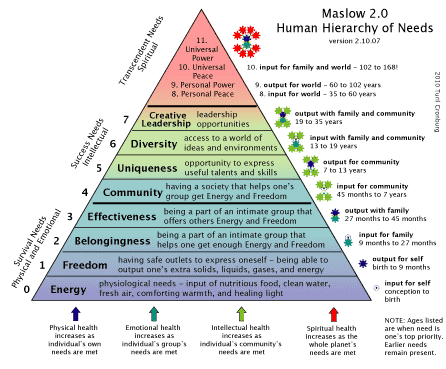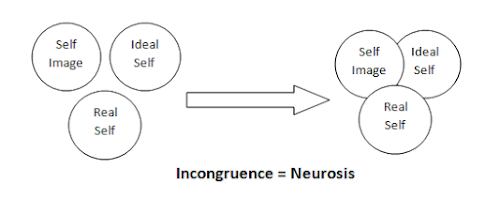Humanistic psychology and its pioneering breakthrough.
Both human needs and understanding of self are the center of controversy for a long time. Psychologists have proposed various theories regarding the classification of human needs, i.e., the basic or fundamental ones and the highest or peak ones.
However, these classifications arose from subjective experiences that lacked proper empirical evidence.
Two of those psychologists were ‘Abraham Maslow’ and ‘Carl Rogers’ who provided conclusive theories on humanistic psychology after observing people’s lifestyles and deriving their judgments from subjective experiences of the human psyche.
You can also watch the video below by Psych Exam Review to know about Abraham Maslow and Carl Rogers theory about humanistic psychology:
Abraham Maslow’s hierarchy of human needs and its significance in humanistic psychology:
Maslow proposed a theory that focuses on human needs called Maslow’s Hierarchy of Human Needs. It classifies them from the lowest to the highest.
He said that an individual’s needs do not arise from a deficiency of resources but his inherent desire to grow, which comes across as a fundamental nature of humanity.
One can choose to go backward toward safety or forward toward growth. Growth must be chosen again and again; fear must be overcome again and again.
– Abraham Maslow
Maslow’s Pyramid:
Maslow’s initial layout of the pyramid had five stages of human needs that Charles McDermid created as a tool for consultants. However, his layout was updated over time to form the modern ‘Maslow’s Pyramid’ consisting of seven stages of human needs.
To understand it on a deeper level, we divide it into eight stages with necessary descriptions.
Maslow claimed that an individual has to fulfill his basic needs of life, i.e., energy needs, food, water, and shelter. Upon fulfilling them, he aims to satisfy his physical needs, independence, and individuality.
The second tier of belongingness needs to become a part of an intimate group through friendships, family, and relationships with the effectiveness needs of the third tier to motivate the individual to seek the limits of his potential.

Community needs of fourth-tier consist of a society of individuals that help their community evolve, and esteem needs of the fifth tier consist of the opportunities to express one’s talents and skills.
The sixth tier of diversity needs to gain access to understanding ideas and possibilities, while the leadership needs of the seventh tier consist of opportunities for leadership among society.
The last tier is the highest tier of human needs. It centers around attaining peace and power concerning personal and universal aspects, called self-actualization.
What a man can be, he must be. This need we call self-actualization.
– Abraham Maslow
How Maslow’s theory works for society and its Limitations concerning humanistic psychology:
Maslow’s pyramid of human needs paints a picture of the levels to which human needs are embraced and attained in society. However, his study isn’t based on any empirical evidence to gain scientific validity.
Besides, if we talk about the present society, it is evident that some of these needs are not a part of an eastern culture where attaining individualistic needs do not matter, and are insignificant compared to the community needs.
Therefore, it is inconsistent and considers the needs of western culture. The hierarchy of needs is not the same and can change concerning an individual and his experiences.
While the basic needs of food, shelter, and clothing are necessary, the higher ones of freedom, community, and effectiveness alter or change for every individual.
However, one can attain diversity needs of contemplating ideas or possibilities before paying attention to community and belonging needs. Therefore, the hierarchy of needs is not universal and varies concerning an individual.
Another problem with Maslow’s theory is that its highest tier is called ‘self-actualization’ tier, where one gains complete control and can distinguish himself from the rest when he attains his full potential.
But the need for self-actualization is realized at any tier, considering the effects of society in shaping an individual. For instance, an individual coming from a peaceful environment might achieve self-actualization needs without following Maslow’s hierarchy.
Maslow’s hierarchy is a subjective way of categorizing human needs into its most basic and advanced tiers.
Though, the theory suffers from inconsistencies, and fallacies, that do not resonate with the different perspectives concerning their needs. The highly subjective nature of theory disregards the contribution of objective society to influence human needs.
Carl Rogers’ theory of self and its significance in humanistic psychology:
Another psychologist interested in humanistic psychology was Carl Rogers. He proposed a theory of ‘self-concept’ where he described the fundamental need of humans to understand and improve themselves.
According to his theory, every individual has a subjective or phenomenal world, which is always dynamic concerning his internal and external environment. He started the client-centered therapy, which psychologists use today.
The curious paradox is that when I accept myself just as I am, then I can change.
– Carl Rogers
Unconditional Positive Regard:
Carl Rogers emphasized ‘unconditional positive regard’ and the significance of self-actualization. However, he explained that it doesn’t follow conditions or rules but understands people and the human condition.
Conditional positive regard, on the other hand, depends on expectations, or conditions and one has to fulfill them to achieve his actualized self. Therefore, it is hard to accept oneself as an individual.
Theory of real self, ideal self, and self-worth:
Carl observed the inconsistency in individuals over their self-image. Some of them were confident and assertive, while others were depressed and turbulent.
Through these observations, he theorized his concept of ‘real self, ideal self, and self-worth’ and stressed on the need for congruency concerning one’s real and ideal self.

The true self is the self as it is, while an ideal self is the full and unwavering potential of self. Individuals with strong congruence between real and ideal self are more confident concerning their identity.
However, incongruence concerning real and ideal self will result in less confidence and a distorted identity.
Principles of ‘Good Life’:
The good life is a process, not a state of being. It is a direction, not a destination.
– Carl Rogers
With his theory of real and ideal self, he embraced the need for a good life which an individual attains when he follows a set of principles he believed was necessary to create a fully functioning individual. These are:
- Openness to new experiences
- Significance of existential lifestyle.
- Confidence concerning one’s own decisions
- Freedom of choice
- Creative and adaptable lifestyle
- Trust and reliability while dealing with others
- Need for rich in experience and fulfilled life
How Rogers’ theory works for clients and their Limitations concerning humanistic psychology:
Just like Maslow’s theory, Rogerian theory also suffers from the subjective nature of the human psyche and lack of empirical evidence.
His client-centered therapy benefits clients who are self-aware and educated. Therefore, it is limited to self-awareness.
His assumption of ‘unconditional positive regard’ is not always good as it can encourage maladaptive behaviors.
If psychologists provide unconditional positive regard to their clients, it will lead to an unchangeable attitude towards self, which in the long run, affects the client and his lifestyle.
Sometimes it is ineffective to use this way as clients are complex, and some can pose a challenge for even a highly patient and self-aware therapist.

His belief in the fundamental goodness of humanity is polarizing as it doesn’t consider the darker traits.
Humans are complex creatures with inconsistent morality. Some clients are manipulative and immoral with their behavior, which is a hurdle to therapists treating them.
The client-centered therapy is very demanding of non-judgmental attitude as well as empathy, which is ineffective when treating clients as it neglects the challenges their clients have to face in therapeutic sessions.
Final Words:
Nevertheless, Abraham Maslow and Carl Rogers were two of the pioneering psychologists in the field of humanistic psychology.
In conclusion, their theories are inconsistent in some aspects, but they laid the foundation for the study of human needs and the importance of self. Their proposed term of self-actualization is something humanity wants to achieve to lead a better and peaceful life.
Pingback: How To Prevent Emotional Hijacking in the Workplace? | Rana Heals